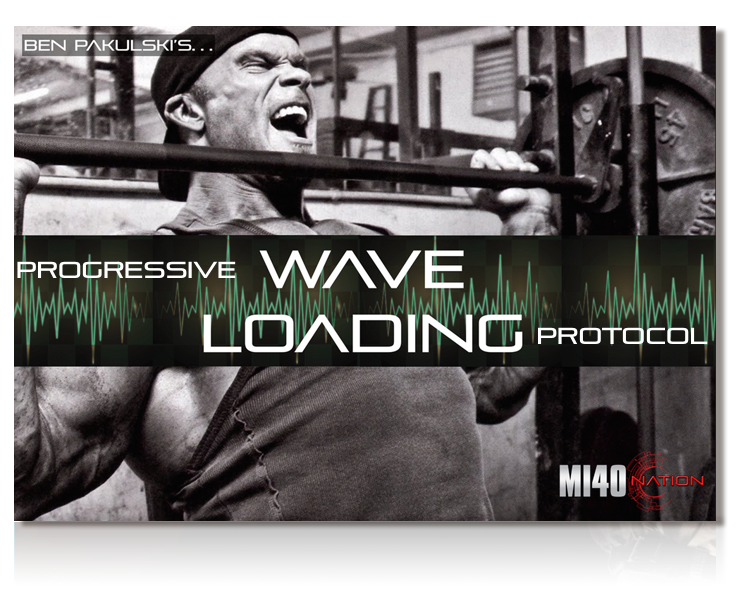
If you’ve been following my workouts for a while, you will be used to training your body to create tension, and to keep tension on the working muscle – now we want to turn our attention to increasing the amount of tension we can produce by focussing a little more on INTENSITY!
In the sense that I want to use the word here, the ‘intensity’ of a contraction can be viewed as the percentage of tension you can create in that muscle during the contraction, compared to your potential…
The greater the tension you can create, the more improvement in strength, and the more signaling for hypertrophy.
Tension and the nervous system are synergistic tools in creating growth in the muscle. The more powerful the neural output —> the more tension —> the more neural feedback —> the more cellular signaling for growth!
So how do you improve your neurological efficiency so you can produce more intense contractions?
> You have to utilize a rep scheme that primes the nervous system, and increases your contraction potential throughout the workout.
> You have to train the nervous with heavy loads that generate lots of tension within the muscle.
> You have to ensure that the intended working muscles are performing the movement, and that you are maximally contracting those muscles (like you will have learned in any of my primer phases).
> Last but no least… you have to progressively increase the load & tension needed!
Why Maximal Contractions are Important
In order to train the nervous system to recruit more fibers at once, you have to contract the working muscle with maximal effort each time. This ensures that you fire every neuron you are currently capable of, creating the highest intensity reps possible.
If you put any less than 100% into a rep, your nervous system backs off with regard to how many neurons it fires.
This is important for fine motor skills and finesse movements, but will get you nowhere in terms of increasing neurological efficiency to produce intensity. You must train with intense contractions to improve that intensity.
By consistently firing the maximum number of neurons you can, the nervous system adapts by learning to fire more neurons at once.
The training effect of maximal contractions is different to performing many reps to work all the muscle fibers. When you use sub-maximal contractions, some of the neurons and muscle fibers are resting while the others are working, and they rotate around each rep, even through parts of the rep.
However… there’s not a complete or constant contraction of all of the neurons and muscle fibers at once!
You can fatigue a muscle with constant reps, but it won’t be optimal for improving neurological efficiency.
Why Maximum Contractions with Heavy Resistance leads to the Most Growth
We are trying to increase your ability to create tension in the working muscle.
Maximum effort with little resistance or heavy resistance spread out from the target muscle will not work. The actual tension in the muscle is the most important factor for stimulating the big growth mechanisms like testosterone and local growth factors. Now in terms of hypertrophy, keep in mind that heavy is a relative term.
For this phase you MUST learn to create as much tension in the muscle by using intent, proper technique, and the proper amount of resistance!
Structure of the Training
Progressive loading refers to a periodization plan where the number of reps decreases each week… and because the reps decrease, the weights used should increase each week.
When focusing on increasing the intensity of contractions, we are training the nervous system to adapt to contracting more fibers at once. This produces the greatest improvements in the lower rep ranges.
Additionally, as you adapt to a load in one week, in order to get the nervous system to adapt further, you must increase the resistance, which increases the neural demand.
A progressive loading scheme allows us to plan increasing loads on the nervous system.
Since the volume and intensity of training is much higher, the frequency between bouts of training for each individual body part will be low.
You will be training each body part only once per week… so MAKE IT COUNT!
Just because your muscles may recover from the workout in a few days, this does not mean that your CNS (Central Nervous System) has recovered. The heavier loads used during this program place a MUCH greater demand on your CNS and it will take longer to recover… this is why you will have a rest day after your two most neurologically demanding workouts (back and quads).
Wave Loading
All but one workout a week will begin with a wave loading protocol…
The first ‘wave’ of the exercise (the first 3 sets of descending reps) will prime your nervous system for the subsequent wave.
Using day 2, exercise 1 as an example:
Sets 1, 2 and 3 (8 reps, 6 reps and 4 reps respectively) should be regarded as the first ‘wave’.
Set 4 (8 reps) would then be regarded as the beginning of the second wave.
* The first wave should NOT be to failure, but be within 1-2 reps of failure using hard, controlled, explosive contractions!
When you begin round 2 with the higher rep set again (set 4), you should now find that you can produce a greater, more powerful, higher intensity contraction than you did in the first round of the wave!
** The second wave should be heavier than the first, and you should hit failure on the last 3 sets…
…your spleen should be about ready to burst! 😉
This approach is a GREAT way to facilitate increases in strength… FAST.
Following on from these demanding wave loading sets (especially demanding from week 3 onwards) we’ll add in some more typical hypertrophy work to facilitate some growth to accompany what should be some drastic strength increases!
BPak




